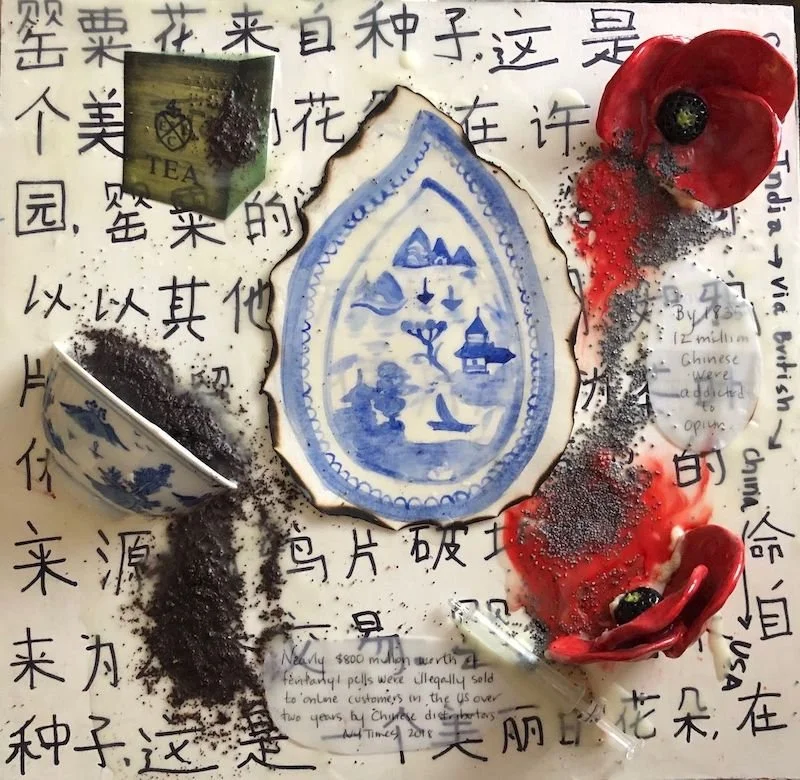Beauty from New England’s drugged-up China Trade
“China Trade: Opium through the Ages” (encaustic, ceramic made and found objects, tea leaves, poppy seeds on panel), by Cambridge,Mass.-based artist Katrina Abbott.
New England’s “China Trade,’’ in the late 18th Century and the first half of the 19th, created great wealth for some in the region, mostly in and around its ports. Some of the trade involved selling opium to the Chinese. Much of that wealth was invested in what became very lucrative industries, such as textile, shoe and machinery manufacturing and railroads.
In her Web site, Ms. Abbott describes herself thusly:
“Katrina Abbott came to art later in life after her twins were born. Previous to this, she spent 25 years in education, including outdoor education, ocean education at sea and urban public school reform. With a BA in Environmental Biology and a Masters in Botany (studying seaweed!), she reflects her interest in and concern for the natural world in her art. She represents the nature in print, paint, wax ( encaustic) and mosaic. She is a member of the Cambridge Art Association and New England Wax and lives in Cambridge with her husband, their 20 year old boy/girl twins and small brown rabbit named Jarvis.’’
Derby House, in Salem, Mass. Elias Hasket Derby was among the wealthiest and most celebrated of post-Revolutionary War merchants in Salem. He was owner of the Grand Turk, said to be the first New England vessel to be used to trade directly with China. There were many mansions built by merchants in the China Trade, some of which was a drug trade.
—Photo by Daderot

